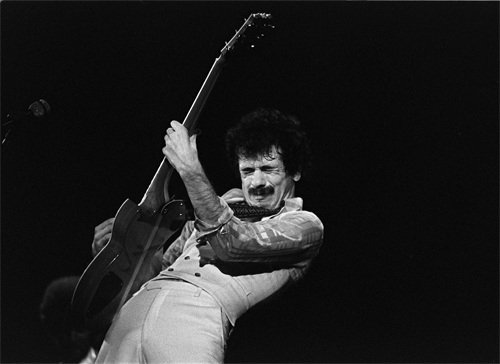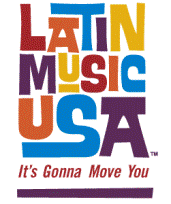
 This week, PBS debuts “Latin Music USA,” a four-part documentary series that seeks to highlight the influence of the genre on American music.
This week, PBS debuts “Latin Music USA,” a four-part documentary series that seeks to highlight the influence of the genre on American music.
Hmmm…must be Hispanic Heritage Month. (More on that later.)
Funny that the series should launch on Columbus Day, since it was the Spanish explorers who brought African slaves to the New World. African musical traditions would take root in the Caribbean and throughout the Gulf of Mexico. The port cities of Havana, Veracruz and New Orleans became places where not only goods, but also rhythms were exchanged. Over centuries and generations, music and dance traditions such as the contradanza, danzón, tango, rumba, mambo, and the cha-cha-cha would all have an impact on American popular culture.
Each iteration would invariably start a “craze” in mainstream America, only to fizzle out when the next big thing came along. But music remained a touchstone in the nation’s Mexican-American, Cuban, and Puerto Rican communities. And in some instances, Latin music carved out permanent marks in American music history.
Airing two episodes on successive Mondays, “Latin Music USA” launches with “Bridges” and “The Salsa Revolution.” “Bridges” opens with Carlos Santana’s thrilling, star-making turn at Woodstock in 1969, tracing his percussive sound to 1930 when Cuban musician Mario Bauzá moved to New York.
One year later, the seminal song “El Manicero” started a rumba dance craze in New York. Other Cuban musicians such as Frank Grillo – better known as “Machito – and an army of congueros that included Mongo Santamaria began to make their mark here. Most famously, the wildly talented but combustible conguero Chano Pozo was introduced to jazz trumpeter and bandleader Dizzy Gillespie. Pozo’s composition for Gillespie’s band, “Manteca,” became the cornerstone of Latin jazz. (Not long after, Pozo was killed in a New York City bar fight.)
By the early 1950s, another Cuban import, Pérez Prado, had launched the mambo craze in the U.S. But Prado was based in Mexico City. In New York, Machito and two Puerto Rican bandleaders, Tito Rodriguez and Tito Puente, turned The Palladium nightclub into Mambo Central.
Among the crowds that thronged to the Palladium was a healthy contingent of Jews. As record producer David Rubinson puts it in the documentary: “Expatriate Jews had nothing to dance to. Latin music wasn’t gentile music – it was soul music, and they could relate to it.”
Among the fans was a young Jewish immigrant named Wolodia Grajonca, who one night won a Latin dance competition at the Palladium. Perhaps you know him better by his American name: Bill Graham. He would later move to San Francisco and launch his career as a music promoter. When the organizers of Woodstock called Graham to ask for his assistance, the promoter agreed to help, on the condition that the festival book a young group he was championing – The Santana Blues Band. How’s that for a bridge?
The show is occasionally dazzling, particularly in archival footage that features the great dancer known as Cuban Pete. Another vintage clip shows Tito Rodriguez in what may be the earliest example of break-dancing.
“Bridges” also points out how the ballroom scene died off after Fidel Castro took over Cuba and cut off the supply of musicians from the island. And then rock ‘n’ roll captured the attention of young Americans – white and Latino alike. But, even then, the Latin influence continued: “Twist and Shout” was essentially “La Bamba”; “Louie, Louie” was based on a cha-cha-cha written by Cuban musician Rene Touzet; The Beatles’ “Day Tripper” can be traced to a song by Machito; and The Young Rascals’ “Good Lovin’ ” is based on the song “Caramelos.”
Episode two, “The Salsa Revolution,” focuses on how New York’s community of young Puerto Rican musicians created a new sound by merging elements of traditional Latin music with rock ‘n’ roll to create the style known as Boogaloo, which evolved into salsa.
Focusing on the rise and fall of New York-based Fania Records, this episode relies heavily on two concert films produced by Jerry Masucci, an Italian-American attorney and former NYC cop who co-founded Fania with musician Johnny Pacheco in 1964. Fania was the New York Yankees of salsa – with a roster of superstars that included trombonist and bandleader Willie Colón, singer Héctor Lavoe, pianist Larry Harlow and the great diva Celia Cruz.
One of this segment’s finest moments is relating the story of Rubén Blades, who had been trained as a lawyer in his native Panama, but who moved to New York in 1974 to establish a music career. He started out working in the Fania mailroom and attracted attention as a songwriter who brought a new sophistication to salsa. He formed a fruitful partnership with Colón, but it disintegrated because – as the bandleader recalls – the cerebral Blades came from a privileged background that clashed with the earthy experience of his bandmates from the streets of El Barrio, as East Harlem is known.
But the main story is about the Fania label and how Masucci – who became sole owner of the label in 1977 – enriched himself at the expense of his artists. (He reportedly owned homes in several cities around the world.) Masucci relates how he decided to retire after a disastrous 1975 concert at Yankee Stadium that had to be halted when members of the audience stormed the stage. Masucci’s interview was conducted in 1997. He died later that year at the age of 63, in his Buenos Aires home.
“Latin Music USA” gives short shrift to the roots of Latin music prior to the 20th century. But it does a solid job of exploring just how pervasive the music’s influence has been in contemporary pop culture. Still, as is the case with many projects of this sort, sometimes it feels like the “exotic” Latin experience is being explained to white viewers – a common problem for PBS in particular. But at least they’re making the effort. Let’s just hope PBS will extend the effort – and escape from the Hispanic Heritage Month ghetto.
-by Oscar Garza
*Photo of Carlos Santana courtesy dgans.




Send A Letter To the Editors